How To Scare Away Pigeons But Not Other Birds?
Pigeons can be a nuisance in urban areas, roosting on buildings and leaving droppings. However, not all birds are pests. Therefore, it’s critical to discover a method that effectively scares away pigeons without endangering other birds.
Using netting, bird spikes, audio-visual deterrents, and chemical deterrents like gels or sprays can help keep pigeons away. Other strategies include habitat alteration by eliminating food supplies or preventing access points, getting professional assistance, or taking preventative steps.
In this article, we will discuss how to play a mind game with pigeons. Along with instructions on how to scare pigeons away, this article offers advice on making your property less alluring to them.
Understanding Pigeon Behavior
Urban locations draw pigeons because they provide a dependable food source and shelter. Pigeons can survive and even thrive in various situations due to their remarkable adaptability. Understanding their behaviour is essential to creating a deterrent plan that works.
Pigeons are most active during the early morning and late afternoon. And they tend to roost and nest in areas that provide shelter and protection from the elements. They are also attracted to areas with food sources, such as breadcrumbs and bird feeders.
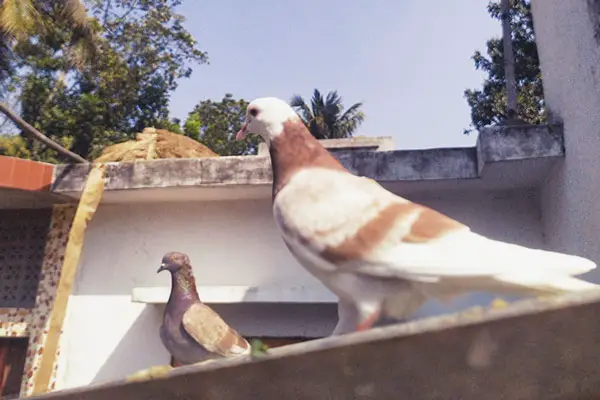
Pigeons love to fly in a group to be safe from predators. This is good for us because if they find your home uncomfortable because you’re using deterrent methods, they will leave your area in folk.
5 Barriers To Scaring Pigeons
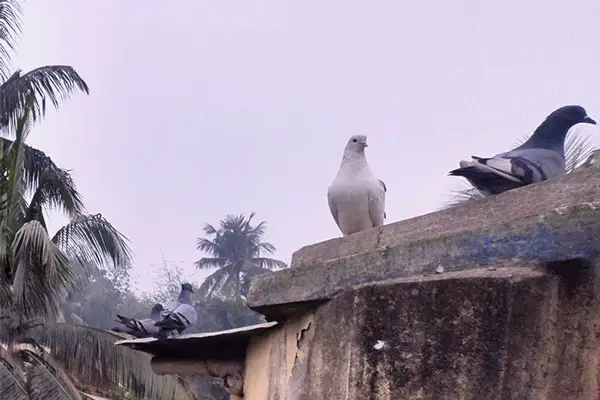
Here, we have discussed the five most effective methods to hinder pigeon access to your properties.
Physical Deterrents
Physical deterrents are devices or materials that make an area less attractive to pigeons. Some examples include-
Bird Spikes
These are long, thin, pointed devices installed on ledges and other surfaces where pigeons like to roost. They make it difficult for pigeons to land and therefore discourage them from roosting in that area. It is one of the highly effective non-lethal measures to control the pigeon population.
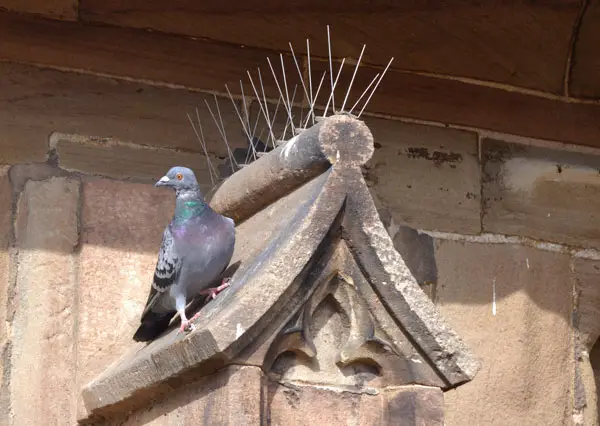
Netting
Netting can cover areas pigeons like to roost, such as ledges and cornices. This makes it difficult for pigeons to gain access to the site.

Reflective Tape
Pigeons are easily scared by shiny, reflective surfaces. Reflective tape can create a visual deterrent that will scare pigeons away.

Chemical Deterrents
Chemical deterrents are substances that are used to repel pigeons. These include-
Repellent Gels and Sprays
These products contain a substance that pigeons find offensive, such as capsaicin (the ingredient in chilli peppers). When applied to surfaces that pigeons like to roost on, they will avoid the area.
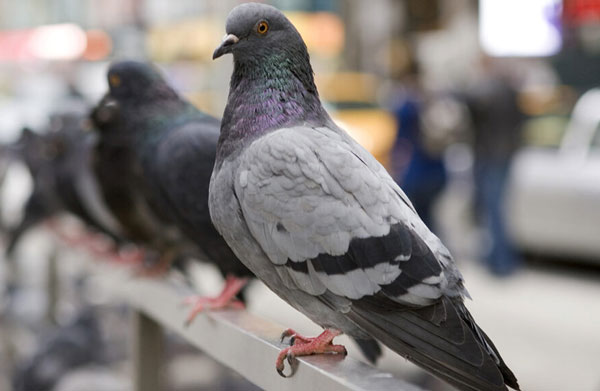
Methyl Anthranilate
This is a food-grade additive that is commonly used in grape-flavoured products. When sprayed in an area, it gives off a strong, unpleasant odour that pigeons find offensive.
Audio Deterrents
Audio deterrents are devices that emit sounds that pigeons find unpleasant. These include-
Ultrasonic Sounds
These high-frequency sounds are inaudible to humans but are highly effective in scaring pigeons away. But it has the risk of scaring other birds too.
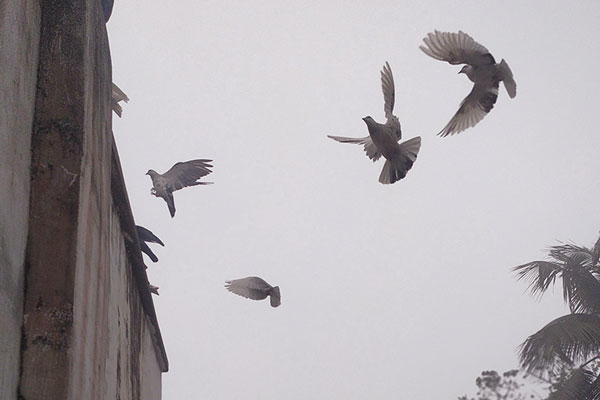
Distress Calls
These play recordings of bird distress calls will scare away pigeons and other birds.
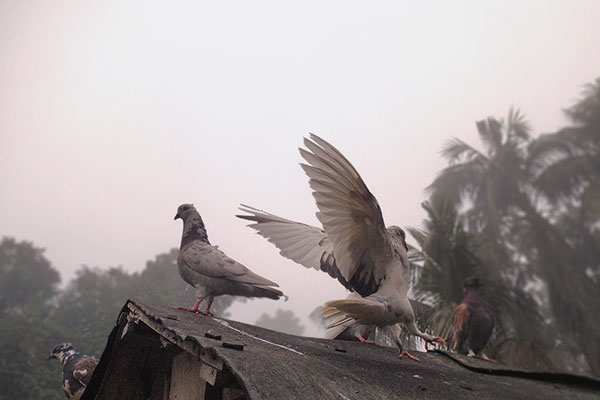
Visual Deterrents
Visual deterrents are devices designed to scare pigeons by creating a visual disturbance. These can include-
Bird Scarers
These devices are designed to mimic the appearance of predators, such as owls or hawks. They can be highly effective in scaring pigeons away.

Balloons
Balloons painted with bright, contrasting colours can create a visual disturbance that may help you get rid of nasty pigeons.

Natural Deterrents
Natural deterrents are methods of scaring pigeons that rely on the use of nature to deter the birds. These can include-
Falconry
Falconry is the practice of using trained birds of prey to scare away pigeons. This is a highly effective method, but it can be expensive and challenging to implement.
Still, pigeons are nasty and are not leaving you in peace. Be optimistic! We have more solutions!
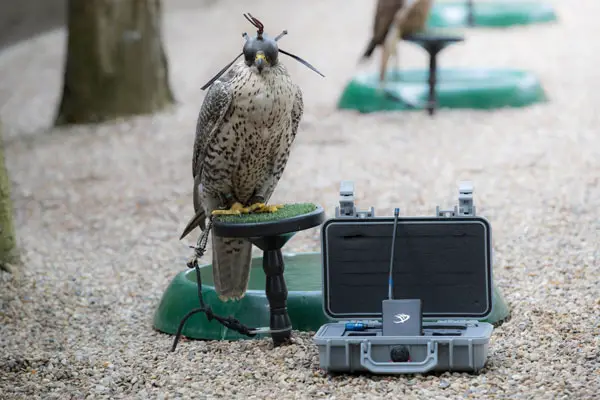
Bonus Tips: Habitat Modification
Habitat modification is making changes to your property that will make it less attractive to pigeons. This can include-

Removing Food Sources
Pigeons are attracted to areas where they can find food. Removing food sources, such as bird feeders and breadcrumbs, will make your property less attractive to pigeons.
Trimming Back Vegetation
Pigeons like to roost in areas where they can hide from predators. Trimming back vegetation will disappoint pigeons.
Closing Off Entry Points
Pigeons can enter buildings through small openings, such as vents and windows. Closing off these entry points will make it difficult for pigeons to gain access to your property.
But Be Careful!
It is even expected that you take the necessary steps to scare away pigeons. However, be careful that you are not harming them. Because it is illegal to harm birds, kill, injure, or destroy the eggs of pigeons or any other birds. It is punishable by law. Hence, never try to use poisons to deter pigeons.
It’s important to note that not all solutions will work for all situations. It’s also recommended to use a combination of methods to deter pigeons effectively. Additionally, it’s essential to be mindful of the birds’ welfare and avoid procedures that may cause harm to pigeons or other wildlife.
Professional Service
If you cannot control pigeons by yourself, it’s time to call professionals in this field. Several pest control companies offer this service. They can effectively save your properties from devastating pigeons.
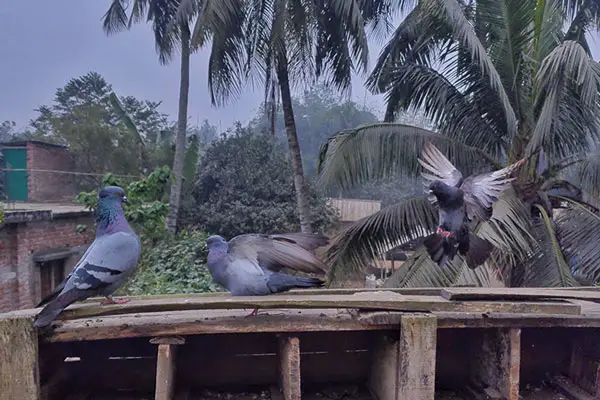
Preventive Measures
Follow these steps to control pigeons as well as other pests from your properties-
- Peel off any litter or cigarettes from your lawn
- Never leave the garbage bin open
- Don’t allow dirty water to accumulate in any parts of your yard
- Use bird foods which pigeons hate. For example- seed-dense foods, suet, peanuts etc.
How To Attract Charming Birds To Your Yard?
Attracting captivating birds to your yard can be a fun and rewarding way to enjoy nature, and there are several steps you can take to make your yard more appealing to various bird species.
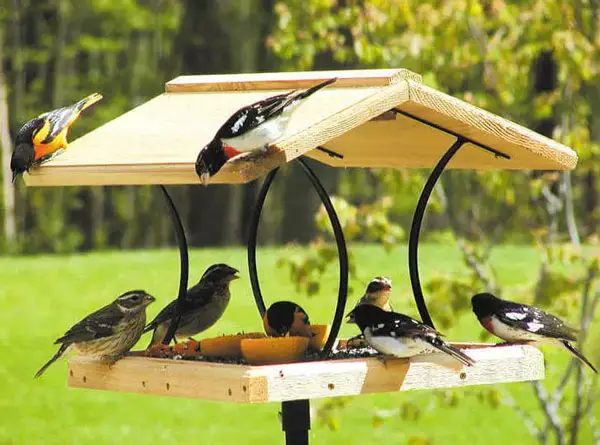
- Provide a variety of food sources: Offer different types of food such as seeds, fruits, and suet to attract a diverse range of birds. These will attract sparrows, finches and cardinals, and other songbirds to your backyard.
- Create a water feature: Birds need water for drinking and bathing. Adding a birdbath or small pond will provide a valuable resource for birds. Waterfowl can’t resist themselves but must visit you!
- Plant bright colour flowers: Hummingbirds are fond of shiny flowers, particularly red, that produce nectar. Nectar is food for hummingbirds. You can try to grow Red buckeye in spring and bee balm in summer. These flowers allure humming!
FAQs
Pigeons are pests that can take away your enjoyable time while feeding small birds. Learn more about how to scare them by reading the following FAQs.
A: Conventional methods of pigeon control include- netting open areas, applying bird spikes, using visual deterrents, etc. But none of them offers long-term control as pigeons somehow can discover alternative ways to escape them.
Recently, a study showed the application of OvoControl® P, an avian contraceptive that can effectively control pigeons for a long time.
A: Bird spikes are designed to deter pigeons, but they will not harm other birds as they are not intended to be used on surfaces where other birds would perch.
A: It is not recommended to use repellent gels or sprays on plants as they may harm the plants and any wildlife that may come into contact with them. It’s better to use physical deterrents or habitat modification methods in a garden.
Final Words
While pigeons can be a nuisance, there are effective ways to deter them without harming other birds. By understanding pigeon behaviour, you can take steps to reduce the presence of pigeons on your property. These include physical, chemical, and audio-visual deterrents. Modifying the habitat can also be effective in reducing the presence of pigeons.
However, pigeons are also part of our biodiversity. Hence, don’t be too rude! Rather use some humane deterrent methods mentioned here.
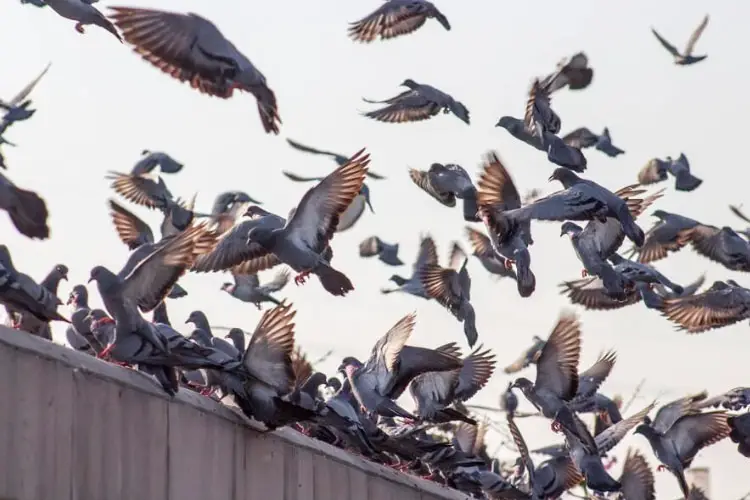
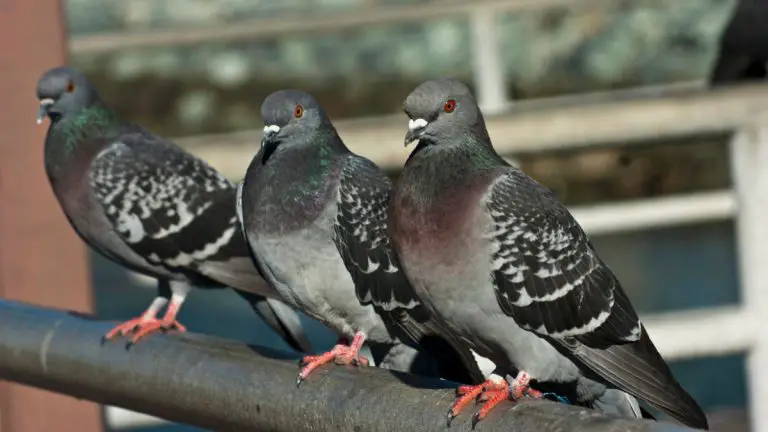

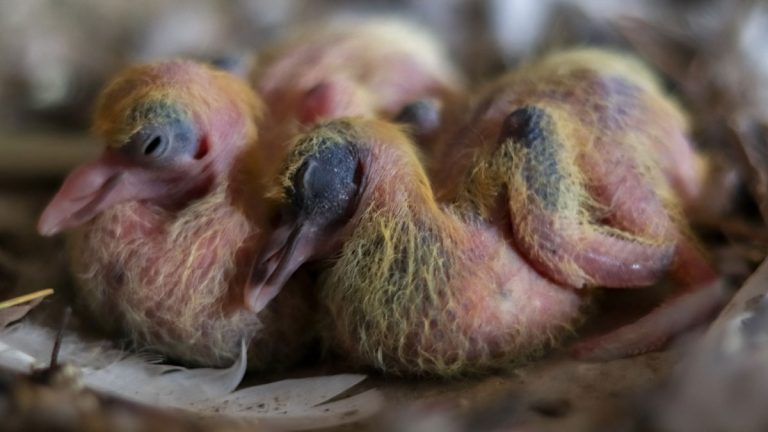
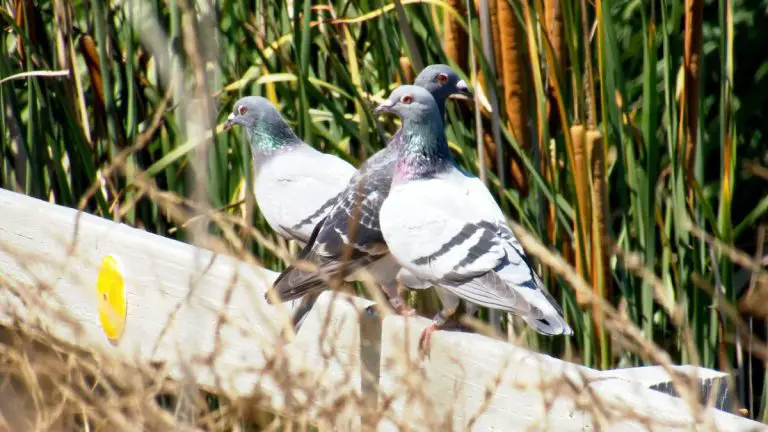
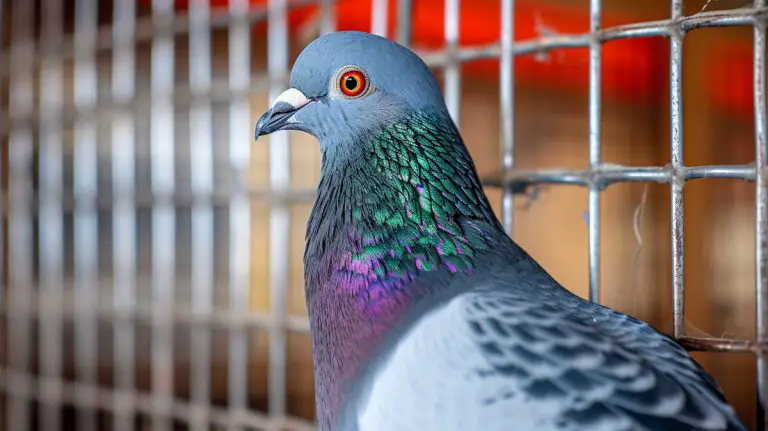
![Do Pigeons Eat Mice? [Everything You Need To Know]](https://avicultureblog.com/wp-content/uploads/2023/01/Do-Pigeons-Eat-Mice.jpg)